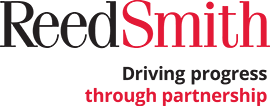Read time: 2 minutes
Insurance will be a vital tool for companies increasingly involved in AI to spread and reduce the risk of potential liability arising out of those operations. Key insurance considerations are outlined below.
E&O
Errors and omissions coverage insures against liability arising out of mistakes in providing professional services. As professional services – from engineering and accounting to medicine and architecture – increasingly rely on AI to expand and speed up the scope of their offerings, many companies could experience a new set of problems caused by the type of data on which their AI tools are based. For example, an information gap in the AI database relied on by a professional company could lead to faulty results. Alternatively, a database that is over-inclusive (e.g., with inaccurate data sets or drafts that were not intended to be used as the basis for client work) also could generate mistake-ridden work product. Companies are implementing important “guardrails” to prevent these issues, but even guardrails can be imperfect, and professional liability insurance will be a vital tool to protect against unforeseen liabilities arising out of the rapid adoption of AI by service providers.
CGL/IP
Insurance coverage for certain intellectual property risks that may arise with AI, such as copyright infringement claims, could traditionally be found in commercial general liability (CGL) insurance policies. These policies cover “advertising injury” claims, which can include claims for copyright infringement. With the advent of the internet age, CGL policy language has evolved to somewhat narrow this coverage, but generally, CGL policies will still cover policyholders for advertising injuries, including inadvertent copyright infringement.
Insurance companies have also begun to offer standalone intellectual property (IP) insurance policies. These policies can provide the policyholder with a defense against intellectual property claims such as copyright and trademark violations. Likewise, policyholders may be able to look to this type of policy to assist in enforcing intellectual property rights, such as a challenge to rights for AI-generated content.
D&O
Directors and officers liability coverage shields a company’s board and management and protects their personal assets from liability.
D&O risks related to AI can include, among others, securities claims, intellectual property claims, breach of fiduciary duty claims, misrepresentation claims and shareholder and derivative lawsuits. Those risks and claims can result from the use of AI in a variety of ways in the entertainment and music industry.
For example, some companies may use AI to write song lyrics, while others may consider acquiring the rights to AI-generated content. In both instances, directors and officers could face potential liability if the AI demonstrates bias, whether due to reputational harm to their company or related to the company’s disclosures and representations about the risks presented by the use of AI.
Other examples of potential liability from AI include claims stemming from the use of AI in generating financial reports or in recommending corporate actions and hiring decisions.
While insureds must be wary of the specific terms and provisions of their D&O policies, such policies can provide valuable protection for directors and officers for AI-related claims.
- Insurance will be a vital tool for companies increasingly involved in AI to spread and reduce the risk of potential liability arising out of those operations
- E&O, CGL, and D&O policies can provide valuable protection to policyholders for AI-related claims
- Insurance companies have also begun to offer standalone intellectual property insurance policies which can provide a defense against IP claims such as copyright and trademark violations
